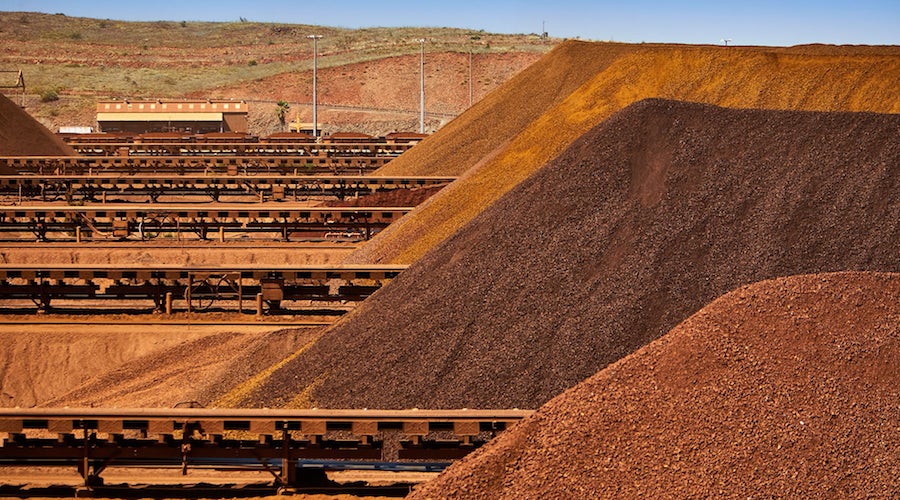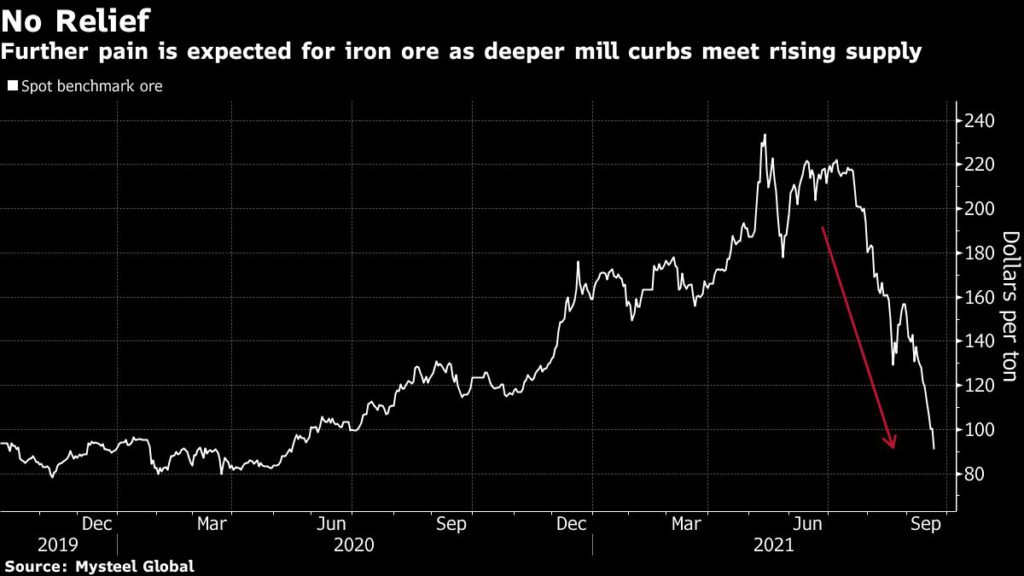
Iron ore’s rollercoaster ride this year is set to end with a whimper as the contraction in China’s steel industry heralds further declines.
The steelmaking ingredient was in the vanguard of this year’s commodities boom, but has plunged 60% from a record above $230 a tonne in May. Curbs on steel output, alongside a property crackdown and concerns about a power shortage, have hammered iron ore demand in China.
That demand squeeze will continue as China’s now mature steel sector faces further caps on production, which plunged to a 17-month low in August. As a consequence, iron ore will come under more pressure, falling to $80 to $90 a ton heading into next year, said UBS Group AG strategist Wayne Gordon.
“This is probably the last hurrah in terms of that fundamental growth in steel demand,” Australia & New Zealand Banking Group Ltd. analyst Daniel Hynes said on Bloomberg Television on Tuesday.
The fallout has been wide-ranging. After the iron ore boom delivered record dividends to the world’s top miners, BHP Group and Rio Tinto Group have since slumped as prices declined. Miners’ shares have shed about $109 billion in value since late July.

So far, iron ore has averaged about $178 a ton this year, according to Mysteel Global figures. UBS now expects the full-year average to decline to $163 a ton and forecasts just $89 for next year. Liberum Capital Ltd. is forecasting $93 a ton next year.
The biggest problem for Chinese steel mills is uncertainty, according to an executive at one large steelmaker. Output curbs are strict, but there is still the possibility of government stimulus, while producers are wary of making iron ore purchases given the risk of further price declines, said the executive, who asked not to be named as he isn’t authorized to speak to the media. The surging price of metallurgical coal has also made it harder for steelmakers to hedge.
As demand wanes, miners are rushing to export iron ore to meet full-year targets. Vale SA’s shipments jumped 12% week-on-week, and Brazil cargoes should continue rising into the year end, according to vessel tracking data from UBS. Port inventories, at 41-days worth of usage, have pushed down prices, the bank said in a report Tuesday.
The bearish outlook for iron ore has prompted UBS to cut its recommendation for Fortescue Metals Group Ltd. and Vale to sell. One smaller Australian producer was forced to suspend operations just after one shipment.
Still, big miners remain profitable: mining costs at Rio Tinto, for example, were between $18 and $18.50 a ton this year.
“Today’s price, given where the cost base of the Australian producers’ sit, is still a very good price,” said David Radclyffe, senior mining analyst at Global Mining Research Pty Ltd. “It wouldn’t have been too long ago when we’d have said this is a good price for those producers.”
(By Krystal Chia, with assistance from Alfred Cang and James Thornhill)
Comments
JITENDER RANKA
Major Iron ore producers would be better off cutting down their productions and despatches so that price downside is blocked. If they do so they would have same amount of sales with less quantity than keep producing and bring down prices.